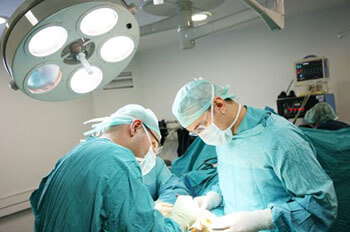Minimally Invasive Surgery in Littleton, CO

Minimally invasive surgery can mean smaller incisional approaches or endoscopic procedures. Using minimally invasive techniques and surgeries provide our patients with many benefits over traditional treatments and surgeries. These benefits typically include:
- Significantly less pain over traditional surgery
- Quicker recovery time
- Faster return to work and normal activities
- Less damage to tissue
- Less scarring
- Outpatient surgery
Minimally Invasive Techniques
Minimally Invasive (MIS) Bunion Surgery Instead of a large incision on the foot, very small incisions are made coupled with the use of x-ray. The bone is cut, shifted over, and fixated with 2 screws. Due to the strength of these 2 screws, you will be able to walk after surgery. This minimally invasive approach allows for less pain and swelling after surgery compared to traditional bunion surgery. There may be additional necessary procedures to achieve full correction of the bunion that Dr. Kloberdanz will discuss with you.
Minimally Invasive Hammertoe Surgery Using the same instruments as with MIS bunion surgery, the toe bones are cut through a very small incision on the top or side of your toe. This is in contrast to traditional hammertoe surgery which requires a large incision on the top of your toe. If necessary, a small screw is inserted into your toe to hold it in the proper position. You will be able to walk after surgery. There may be additional necessary procedures to achieve full correction of the hammertoe that your doctors will discuss with you.
Minimally Invasive Tailor’s Bunion (Bunionette) Surgery Using the same instruments as with MIS bunion and hammertoe surgery, a cut is made in the knuckle bone and the bone is shifted over, eliminating the tailor’s bunion. This is also done through a very small incision relative to traditional tailor’s bunion surgery. No screws are required for fixation. You will be able to walk after surgery.
Endoscopic Plantar Fasciotomy (EPF) is a minimally invasive, endoscopic technique used to release extreme tension of the plantar fascia. An endoscope provides clear visualization of the inferior surface of the plantar fascia, allowing the surgeon to release tension in the medial band. Following the procedure, a sterile dressing is worn for approximately 3-5 days, then the patient is generally allowed to wear comfortable shoes as tolerated.
